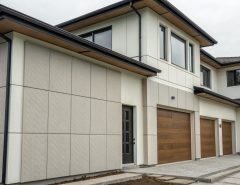In a rainy place like the UK, gutters can be some of the hardest-working parts of a home or other building. It is no wonder that they sometimes need attention, whether that is maintenance, repair or replacement. Properly installed and made from durable materials, most gutters will not need regular replacement. Indeed, many building occupiers can spend years in a property without needing even to think about tackling the job. That said, it is important to recognise the signs that might indicate guttering needs replacing, especially as over time this can affect the Brick Cladding on your building and you may need to contract the services of a company such as www.telling.co.uk/architecture/brick-cladding/. Here are five of them.

Nails, Screws or Other Fasteners
One of the first signs that all is not well with your UPVC fascia boards might be the presence of screws, nails or other fasteners on the ground beneath. Easy to dismiss as having come from something else, they are often an important first warning sign that the roofline may need imminent attention.
Gutters No Longer Flush with the Roof
Being able to see a gap between the roofline and the guttering is another indication that all is not as it should be. For a while, it may be possible to re-hammer the fasteners, but, ultimately, replacement is likely to be the best bet.

Cracks and Holes
These can be difficult to spot unless you’re up close to them, but a twice-yearly inspection of all of your UPVC fascia boards should be enough to reveal any issues. Small cracks and holes can often be repaired with sealant, especially if there are not many of them. Larger or more extensive damage may suggest that replacement is the best solution.
Separated Gutters
Each section of gutter should fit flush with its neighbours. Uneven sections are a sign that all is not well and that water could be leaking. Peeling paint on the side of the building is an indication that this may be happening already. So, too, can damp or flooded cellars. This is because water that trickles down the sides of the building tends to leak into the cellar via the foundations. It can also make the walls damp, which is a potential health risk, especially for those with asthma or other respiratory problems.
Sagging Gutters
As well as being unsightly, this can result in water pooling in certain areas and not draining away effectively.




Leave a Reply
You must be logged in to post a comment.